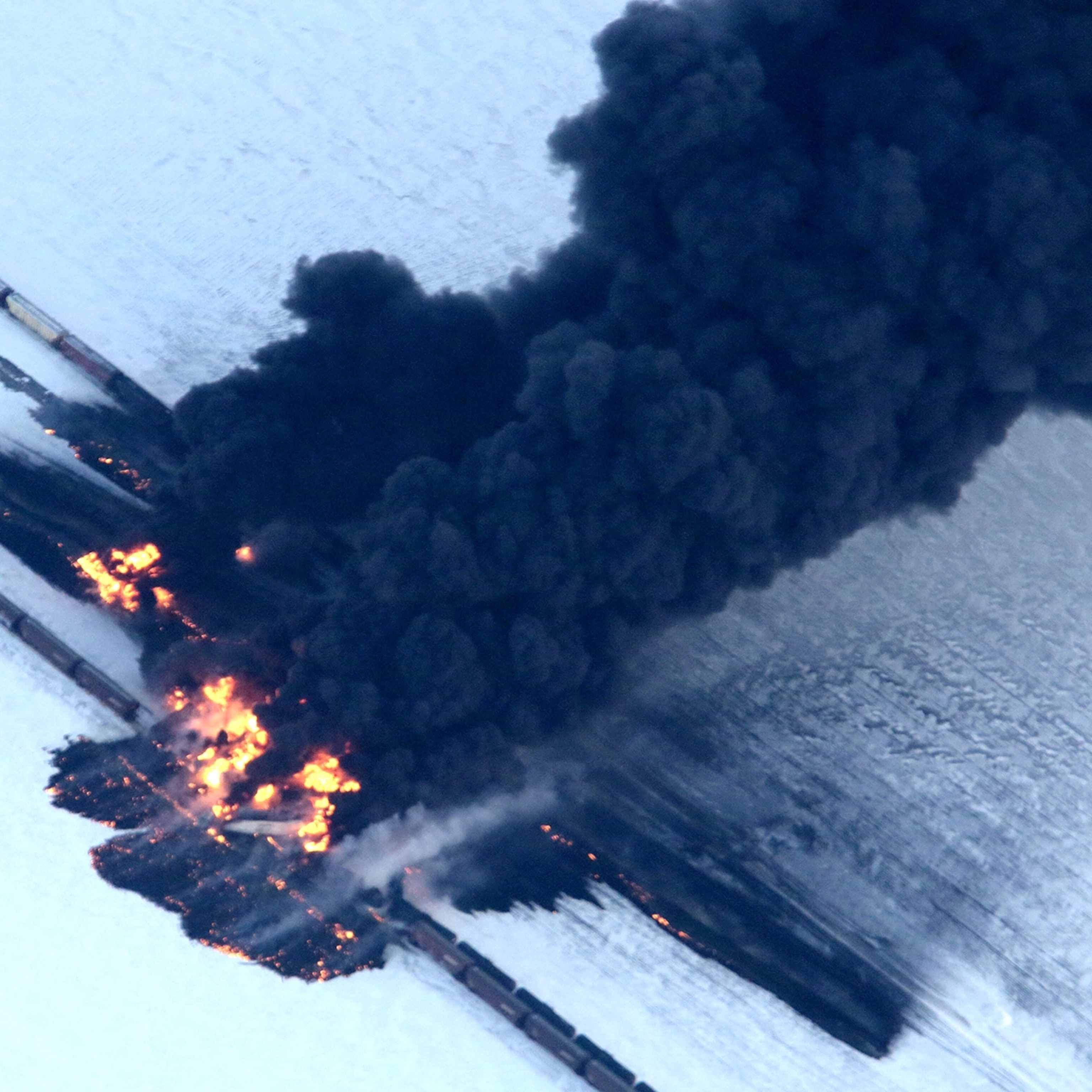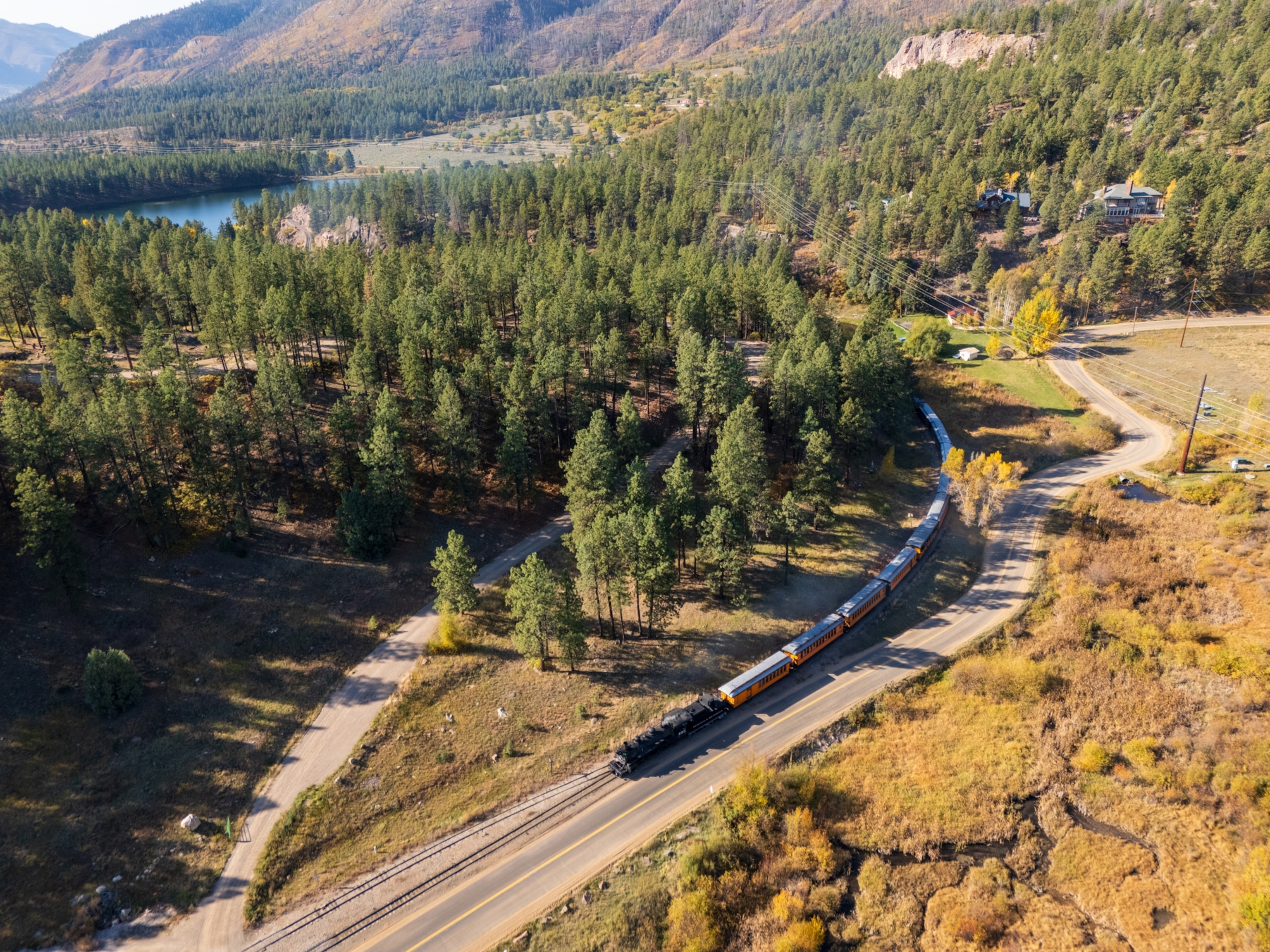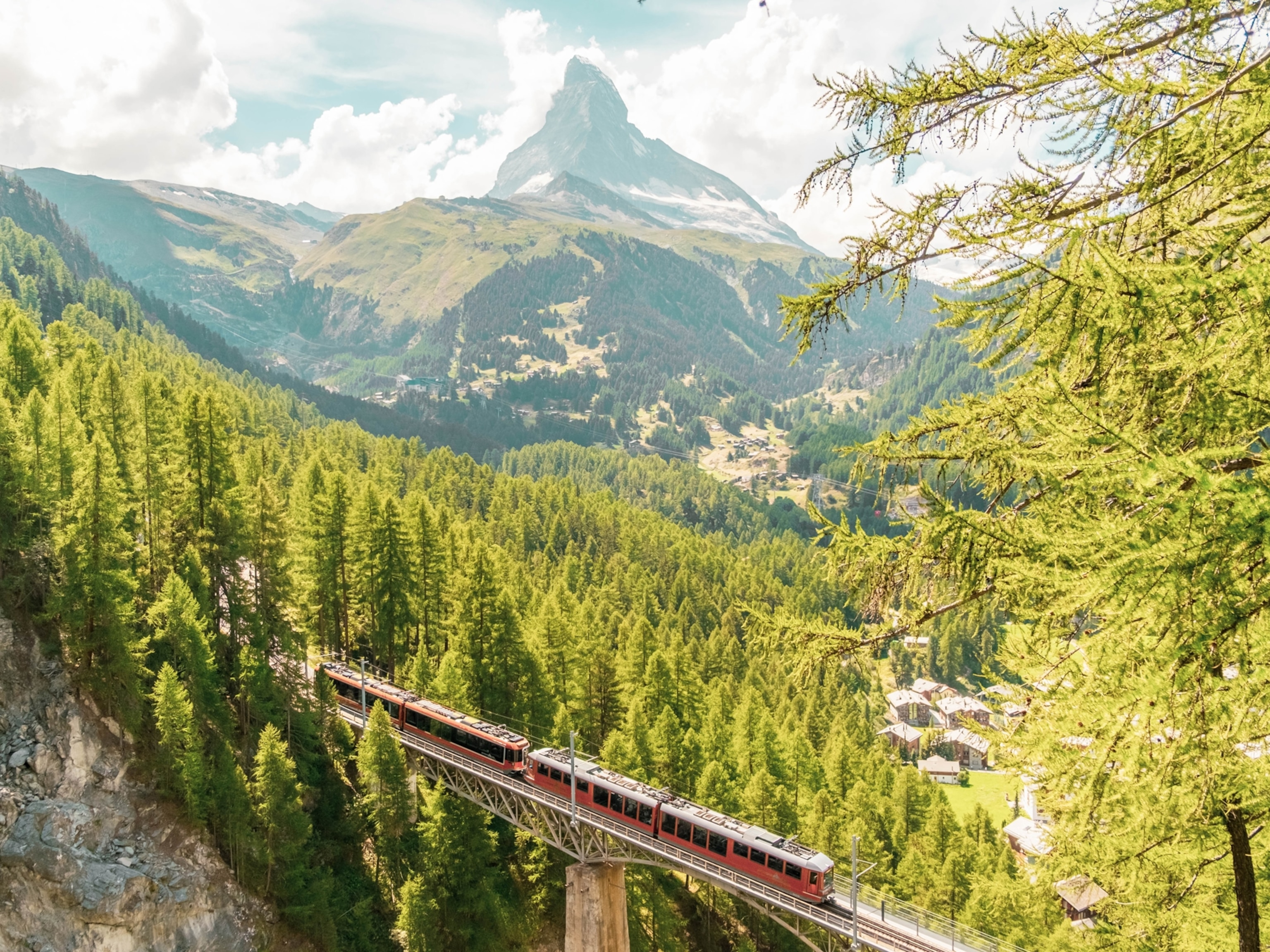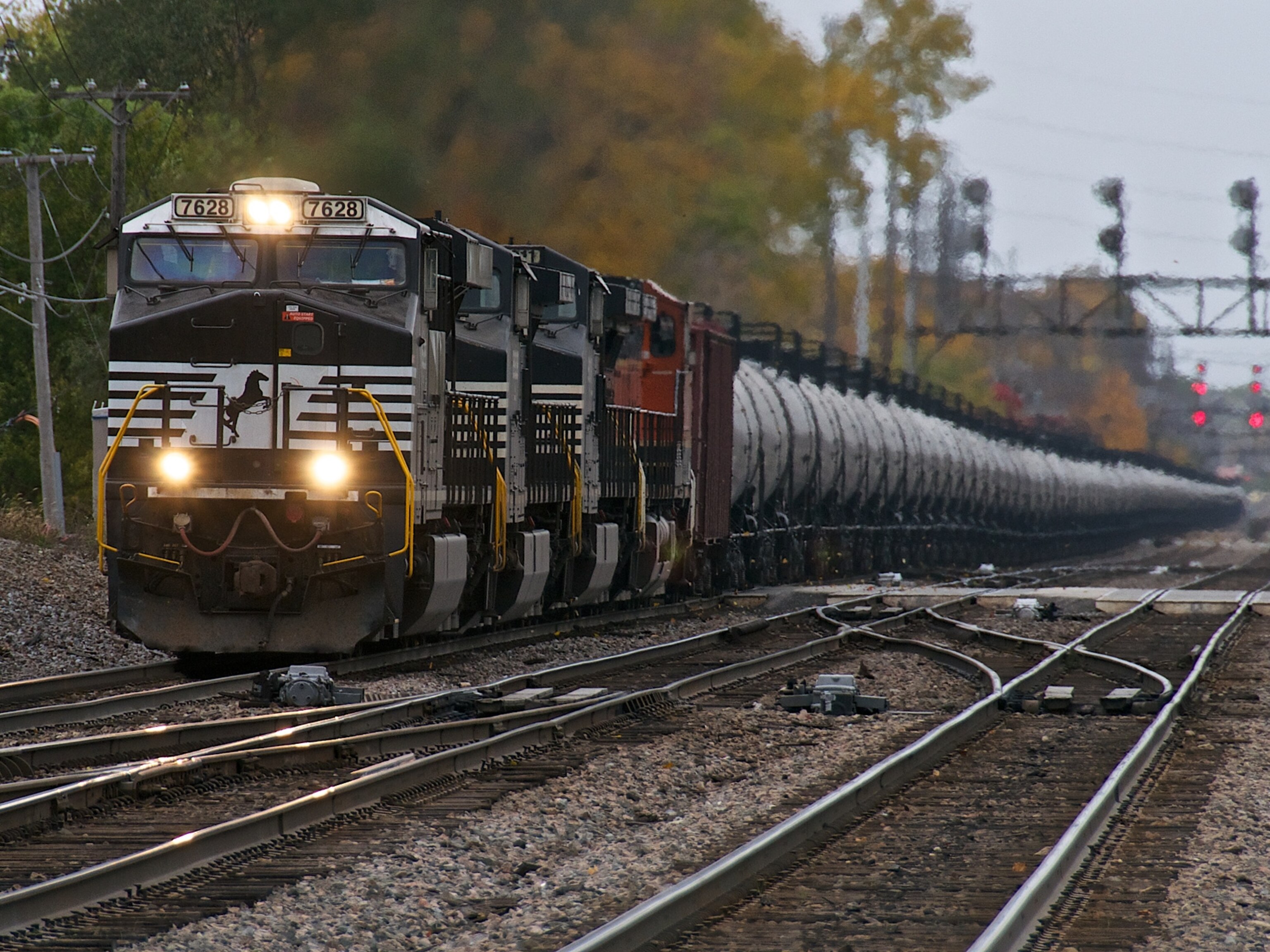
Oil Train Tragedy in Canada Spotlights Rising Crude Transport by Rail
The explosive train derailment that killed at least five people and left dozens missing in a Canadian lakeside town focused attention on North America's skyrocketing use of rail to transport its booming oil production.
With authorities still reckoning the death toll from the explosive train derailment that leveled the downtown of the Lac-Mégantic, Quebec, the tragedy cast a spotlight on North America's sharply increasing use of rail to transport its new wealth of crude oil.
The train had been parked for an overnight shift change four miles (7 kilometers) from the Canadian lakeside town when at about 1 a.m. Saturday, the 73 black tankers carrying pressurized containers of crude oil decoupled from their five locomotives for unknown reasons. They rolled downhill driverless into the town center, derailed, and set off a series of explosions and fire that raged for hours in the small community near the Maine border.
"It looks like a war zone," Prime Minister Stephen Harper said after touring the scene Sunday, while authorities confirmed five deaths with dozens more missing. Some 30 buildings were destroyed, including a crowded bistro, and the town's library and archives. A Red Cross volunteer told The Star newspaper there were no wounded to care for: "They're all dead."
Harper stressed there would be investigations into the cause of the disaster to "make sure it can't happen again." The Montreal, Maine, & Atlantic Railway said that the locomotive was shut down after the departure of the engineer, possibly resulting in the release of air brakes that were holding the train in place.
The train was carrying crude from the region that has spearheaded the revival in the use of oil trains in North America: North Dakota's Bakken shale. (See related: "Oil Train Revival: Booming North Dakota Relies on Rail to Deliver Its Crude.") Fracking, or hydraulic fracturing, has enabled North Dakota to quickly become the No. 2 oil producer in the United States, but the state has few pipelines to carry its new product to market. (See related Interactive: Breaking Fuel From Rock.) So the oil industry has turned to rail to move crude to refineries on the East, West and Gulf coasts. The train that derailed at Lac-Mégantic was bound for a refinery in New Brunswick, east of Quebec. (See related story: "New Brunswick Seeks Natural Gas, and a Safer Way.")
The growth in train transport of oil has been staggering. Shipments of Bakken shale oil were expected to exceed 800,000 barrels per day by the end of this year, up tenfold just since August 2011, according to a recent analysis by the U.S. State Department. Across the United States, rail carloads of crude, which totaled just 9,500 in 2008, were up to 97,000 in just the first quarter of this year—on track for a 40-fold increase in just five years. Canada's railroads, which carried just 500 carloads of crude in 2009, will carry 130,000 to 140,000 carloads this year, the Railway Association of Canada says. (See related story: "U.S. to Overtake Saudi Arabia, Russia as World's Top Energy Producer.")
Rail Costs and Benefits
It has been more than a century since so much oil has moved across North America by rail. The railroads helped John D. Rockefeller build his Standard Oil empire at the dawn of the petroleum age. But ever since the first successful oil pipeline was built in Pennsylvania in 1879, it became clear that pipes were a cheaper and quicker way to transport oil. When oil production shifted to Texas and Oklahoma, pipelines rapidly connected the new production hub to the rest of the country.
North America's new hot oil production centers, the Bakken shale in North Dakota and the oil sands of western Canada, aren't well tied into this pipeline network. (See related photos: "Bakken Shale Oil Boom Transforms North Dakota.") But the price of crude oil is now high enough that the additional cost of paying to transport it by train has not been a hindrance for the oil industry in North Dakota, the U.S. State Department said in an extensive market analysis related to the decision whether to approve the controversial Keystone XL pipeline from Canada to Texas. (See interactive, "Mapping the Flow of Tar Sands Oil.")
Rail transport of oil has been slower to develop out of Canada's oil sands. But State Department analysts foresee it growing—one of the key reasons they concluded that the Keystone XL, if built, would have minimal impact on greenhouse gas emissions. The carbon-intensive oil of Canada's tar sands will get to market, with or without the pipeline, they argued; it will move by rail. (See related: "Keystone XL Pipeline Path Marks New Battle Line in Oklahoma.") Others dispute that conclusion, noting that the heavy tar sands oil, which needs extensive processing, does not fetch as high a price as the light, sweet crude from North Dakota, making the costs of rail travel more difficult for producers.
In any event, more than half of North Dakota's oil production is now transported by rail, and extensive infrastructure is now being built to ship more, the State Department said.
An important factor keeping the cost of train transport down for oil producers has been the practice of sending the crude in trains made entirely of tanker cars of oil, like the train that crashed in Lac-Mégantic. Shipping in these "unit trains," long lines of black tankers that look like a moving above-ground pipeline, is cheaper than the traditional "manifest train" that is a mix of boxcars, flatbeds, grain hoppers, and coal cars (an operator needs a "manifest," or list, to keep track of what's aboard.) New onloading and offloading stations are being built especially for all-oil trains.
Measuring Rail Risks
The oil train trend has launched far ahead of any public debate on the potential safety issues. But discussion has been underway on risks of oil train shipments from the Midwest, with state officials as far away as Maine reviewing their spill readiness plans. Railroad executives have argued that any spill from their trains would prove minor in contrast to a pipeline spill. "If you have one railcar that gets punctured, it is 600 barrels that might spill," Canadian National Chief Executive Claude Mongeau told Wall Street analysts at one briefing, "nothing like what could happen if you have a spill with a pipeline." (See related: "Oil Spill Spotlights Keystone XL Issue: Is Canadian Crude Worse?")
But critics of new pipelines have not been sanguine about oil trains. Pipelines can be built to avoid population centers and fragile ecosystems, while trains travel over routes where such concerns were not weighed, Wayde Schafer, a North Dakota-based spokesman for the Sierra Club, said in an interview last year. "The trains travel through sensitive areas, and right through the middle of many towns," he said—including two blocks from his office in downtown Bismarck. (Related Photos: "Animals That Blocked The Path of the Keystone Pipeline")
In May, a study by the Paris-based International Energy Agency concluded that pipelines in North America spilled three times as much crude oil as trains for comparative distances over an eight-year period. But the study, based on U.S. Department of Transportation data, also said that the risk of a train spill proved to be six times greater than a pipeline incident over the period between 2004 and 2012. (See related "Pictures: Arkansas Oil Spill Darkens Backyards, Driveways.")
"Increasing volumes of crude oil transported by rail raise questions of safety," the IEA said. "Our analysis reveals that compared to pipelines, rail incident rates are higher while the opposite holds for spill rates." That study did not include a derailment in March in Minnesota, when a mile-long train hauling oil from Canada leaked 30,000 gallons (113,560 liters) of crude, more than double the amount spilled by trains in the previous four years.
Train accidents do have the potential to do more than puncture a tank car. Ethanol train accidents, for example, have resulted in multiple car derailments that have sparked massive fireballs. In one of the worst cases, in Cherry Valley, Illinois, in 2009, a derailment of 13 ethanol cars and resulting fire killed one person at a rail crossing and injured seven others, led to the evacuation of 600 homes, and caused $8 million in damages.
In a statement posted Sunday on its web site, the Rail Association of Canada expressed sympathy for the Lac-Mégantic victims, and pledged to work with the Ministry of Transportation and the Transportation Safety Board of Canada in the investigation to identify the cause of what it called an "atypical accident."
"Millions of cars with products that are essential to our quality of life—from purifying water we drink to fuel used to heat our homes and power our vehicles—are transported by rail each year," the statement said. "More than 99.9977 percent of these cars arrive at their destination safely."
For now, rail remains a critical way for industry to bridge the gap in pipeline infrastructure. It has allowed North Dakota's oil producers to add and subtract shipping capacity—the number of train carloads—quickly, and to pick and choose the most lucrative markets. Last year, for instance, North Dakota producers shipping by rail could send their crude directly to the East Coast or Gulf Coast, where it sold at higher prices than if it had been transported by pipeline through a bottleneck in Oklahoma. "The darn thing about pipelines is they only go from one place to another," Rusty Braziel, of RBN Energy, in an interview for a story about the trend last year. "Railroads go just about anywhere."
Additional reporting by David LaGesse
This story is part of a special series that explores energy issues. For more, visit The Great Energy Challenge.








